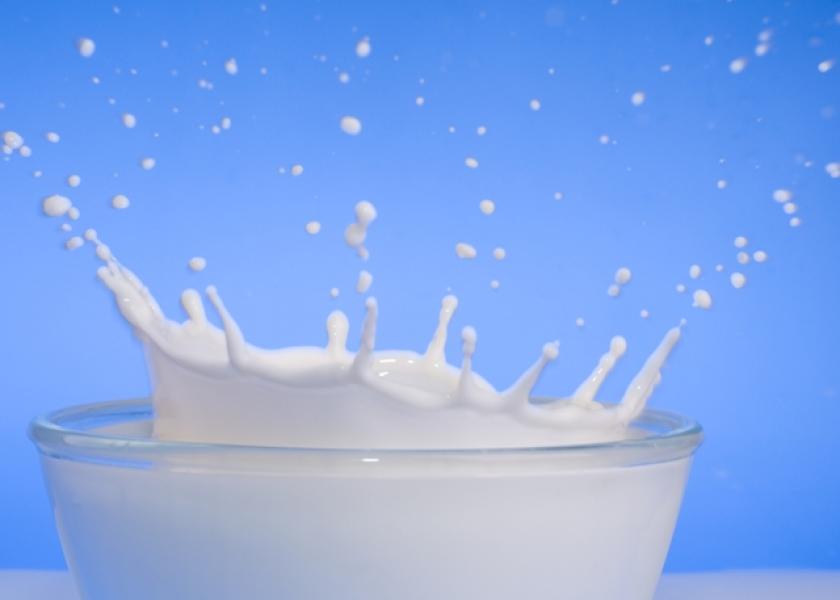Weaker Yen Hurts Japanese Dairies, Could Lower Demand For U.S. Corn

Japan’s dairies and cake lovers just can’t seem to catch a break.
A weakening yen is making it more expensive for farmers to import the U.S. corn their cows eat at a time when record crops have reduced livestock-feeding costs around the world. And while Japanese milk demand is increasing and prices of some dairy products are at record highs, domestic production is the lowest in three decades even as rising output everywhere else creates a global surplus.
Prime Minister Shinzo Abe’s bid to revive growth with unprecedented monetary easing sent the yen to a seven-year low against the dollar as Japan has slipped into a recession for the fourth time since 2008. The currency’s slide compounded the profit squeeze on a dairy industry already losing market share to imported cheese and milk, while the government pushes free trade pacts that it says will boost supplies and lower costs.
“We can secure only half the volume of butter needed,” Atsuko Uehara, 43, said in an interview at the bakery she opened with her husband two decades ago in Saitama prefecture, north of Tokyo. “We are told by wholesalers that milk supply to butter makers will keep declining. No end is in sight.”
For Uehara, that may mean the worst Christmas-sales season ever. Without enough butter, she says the baker won’t be able to make enough Buche de Noel rolled with chocolate whipped cream, her best-selling item during the holiday season.
Less Milk
Raw-milk production in the six months through Sept. 30 dropped 2.5 percent from a year earlier to 3.7 million metric tons, according to agriculture ministry. Full-year output will be 7.3 million tons, the least since the year ended in March 1985, trailing demand at 12 million tons, the Japan Dairy Association predicts.
Output could decline even further unless the industry gets some relief, said Yasuhiro Saito, the president of Fonterra Japan Ltd., a unit of New Zealand’s Fonterra Cooperative Group Ltd., the world’s top dairy exporter.
The number of dairy farms tumbled to 18,600 this year from 41,300 in 1996, when milk output peaked at 8.7 million tons, agriculture ministry data show. Over the same period, demand is up 32 percent. The dairy herd has dropped to 1.4 million head, the smallest in almost five decades.
The yen is putting more pressure on dairy producers who have wrestled for years with high production costs and competition from imports. The currency has plunged more than 40 percent in the past two years and touched 119.14 per dollar today, the weakest since 2007, making grain purchases more expensive.
Rising Costs
Japan imported 14.4 million tons of corn in 2013, with about 70 percent eaten by chickens, pigs and cattle, government data show. Feed accounts for almost half of dairy-farm costs. Even after corn futures in Chicago fell almost 50 percent in the past two years, following back-to-back record harvests, the cost for buyers using yen is up. Compound feed made from corn, soybean meal and other grains climbed to 68,661 yen ($675) a ton in July, the highest since 1981, farm ministry data show.
U.S. grains “are too expensive, turning many farms unprofitable,” said Kazuaki Araki, professor of agricultural economics at Rakuno Gakuen University in Hokkaido.
Surging costs are forcing more dairy farmers of all sizes to quit the business, said Yoshitaka Mashima, vice chairman of the National Confederation of Farmers Movements.
Consumers Pay
In a country that until mid-2013 had endured 15 years of sustained deflation, dairy producers including Morinaga Milk Industry Co. and Megmilk Snow Brand Co. have been forced to charge more to cover higher costs.
Butter for sale to confectionery makers climbed 5.5 percent this year through September, hitting an average 1,309 yen a kilogram in August, the highest on records dating back to 1966, government data show. Milk powder rose to a record 16,780 yen per 25-kilogram container.
That’s boosted grocery bills on top of an April sales-tax increase that sent total household costs higher. Food prices rose 3.8 percent from a year earlier in October, after hitting 5.3 percent in May, the fastest since 1991, government data show. Food accounts for one quarter of the consumer price index.
Consumer prices excluding fresh food will climb 1.7 percent in the year through March 2016, according to estimates compiled by Bloomberg. The Bank of Japan sees the measure rising 2.4 percent over the same period.
Emergency Imports
To help ease supply shortages, the government allowed emergency imports this year of 10,000 tons of powdered skim milk in the first such purchase since 1997, along with a record- setting 10,000 tons of butter. Dairy imports were 4.1 million tons of raw milk equivalent in the fiscal year ended in March, as local output fell short of consumption.
There’s no immediate sign of easing yet as the government keeps a tight grip on the market to protect local farmers from foreign competition. The nation levies 360 percent tariffs on butter imports and 218 percent on milk powder purchases that exceed government quotas.
“Japan lacks an idea of cutting tariffs for the benefit of consumers,” Fonterra Japan’s Saito said. “The policy of protecting dairy farmers raises the risk that demand may shift to cheaper alternatives, which would be negative for the whole industry.”
Japan is in U.S.-led trade talks on a Trans-Pacific Partnership, along with 11 other nations including New Zealand and Australia. In October, U.S. dairy manufacturers called for more access to the Japanese market.
Until then, cake-shop owner Uehara says she has few options except to raise prices, even if it means losing customers.
“The cost increases are too big for us to absorb,” she said.







